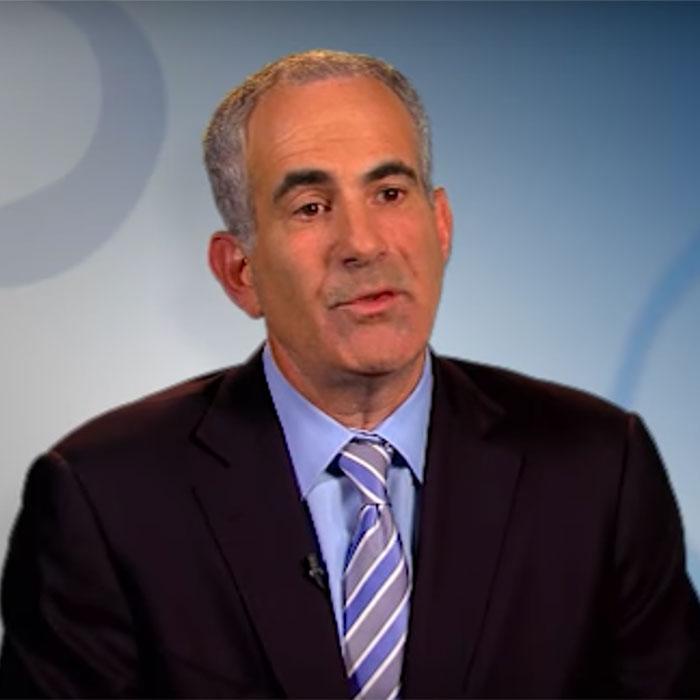BRETT WEISS
New York, NY
Mycosis fungoides (MF) is the most common form of cutaneous T-cell lymphoma (CTCL). Although the terms MF and CTCL are often used interchangeably, this can be a source of confusion. All cases of MF are CTCL, but not all CTCL cases are MF.
Mycosis fungoides follows a slow, chronic (indolent) course and very often does not spread beyond the skin.
In about 10% of cases, MF can progress to lymph nodes and internal organs. Symptoms of MF can include flat, red, scaly patches, thicker raised lesions called plaques, and sometimes large nodules called tumors. MF can look like other common skin conditions like eczema or psoriasis, and might be present for years or even decades before it’s diagnosed as CTCL. The disease can progress over many years, often decades.
There is continuing research into possible environmental or infectious agents that might contribute to MF, but at this time no single factor has been proven to cause this disease. One theory about how MF might occur is because of chronic low-level stimulation of T-cells in the skin. The skin has about twice the number of T-cells than blood - about a million per cm2. These T-cells are very busy, responding to outside insults and protecting our largest organ from the outside world. Sometimes some of the T-cells get stimulated - for example by an insect bite, or topical allergen - and that can cause chronic low level stimulation.
There is no supportive research indicating that MF is hereditary. Exposure to Agent Orange may be a risk factor for developing MF for veterans of the Vietnam War, but no direct cause-effect relationship has been established.
It is important to know that MF is not contagious.
It is not an infection and cannot be passed from person to person.
As a group, CTCL is a rare family of diseases. While the number of new cases diagnosed each year is relatively low (about 3,000), it is estimated that, since patients have a very long survival, there may be as many as 30,000 patients living with cutaneous lymphoma in the United States and Canada. MF is more common in men compared to women, in blacks compared to whites, and in patients older than 50 years of age compared to younger people. Due to the difficulty of diagnosing the disease in its early stages, the slow course of MF, and the lack of an accurate reporting system, these numbers are probably low estimates.
Mycosis fungoides is very difficult to diagnose, especially in early stages. The symptoms and skin biopsy findings of MF are similar to other benign skin conditions like eczema, psoriasis, parapsoriasis, or pityriasis lichenoides. Patients may go for years or even decades before a definitive diagnosis of MF is established. MF is sometimes diagnosed initially only by dermatologists or oncologists who specialize in cutaneous lymphomas.
Typical procedures done to diagnose MF include:
- A complete physical exam (including a thorough skin exam);
- A skin and/or lymph node biopsy (removal of a small piece of tissue) for examination under the microscope by a pathologist (a doctor who studies tissues and cells to identify diseases);
- Blood tests;
- And possibly imaging tests such as CT (computerized axial tomography) and/or PET (positron emission tomography) scans.
It is very important that any diagnosis of MF is confirmed by a pathologist who has expertise in diagnosing cutaneous lymphomas.
EXPERT PRESENTERS:
Stuart Lessin, MD, Medical Director, KGL Skin Study Center, Broomall, PA
Pierluigi Porcu, MD, Director, Hematologic Malignancies and Hematopoietic Stem Cell Transplantation Division, Sidney Kimmel Cancer Center, Thomas Jefferson University Hospital (At time of publication: Associate Professor of Internal Medicine, Division of Hematology-Oncology, Ohio State University Comprehensive Cancer Center)
Larisa Geskin, MD, Director, Cutaneous Oncology, Columbia University Medical Center (At time of publication: Associate Professor of Dermatology, University of Pittsburgh)
The treatment of MF is continuously evolving and improving. At any one time, there are numerous clinical trials ongoing to determine newer and better treatments. It’s important to discuss clinical trials with your care provider.
The National Comprehensive Cancer Network (NCCN) is an alliance of the world’s leading cancer centers, and is dedicated to improving the care provided to patients with cancer. NCCN institutions and experts work together to provide and maintain up to date guidelines for the care of patients with mycosis fungoides. Selecting the right treatment or combination of treatments for you can be daunting, and it’s important to work with a specialist who has experience treating patients with MF.
You may be prescribed a single treatment or a combination of treatments.
Skin-Directed Therapies
In most patients with MF, the lymphoma cells are primarily limited to the skin, and one can have excellent and long-lasting responses with treatments directed at the skin, or “skin directed therapy”. Because treatment is directed just at the skin, the toxicity of these treatments is low. Examples of skin directed therapies are creams, ointments, or gels that are applied to the skin, such as topical steroids, topical nitrogen mustard, retinoids, and immune stimulating creams (imiquimod). Ultraviolet light (“medical tanning”) and radiation therapy are also types of skin directed therapy.
Systemic Therapies
“Systemic therapy” refers to any treatment that, after absorption, reaches the bloodstream and is therefore distributed across the body “system.” Any drug that is taken by mouth, given as a suppository, injected under the skin, taken under the tongue, or directly infused through a blood vessel will eventually reach all body organs and tissues (including the skin), with the exception of the brain, which by design is protected by a specific “barrier.” Systemic therapies are used in MF when skin directed therapies aren’t working well enough, or are too difficult to apply, or the disease is advanced. Systemic therapies may be used alone or in combination, and are often used together with skin directed therapies (for example using a pill to make you more sensitive to ultraviolet light therapy). Nearly all of the systemic therapies used in MF are considered “targeted” drugs, which means that they work in different ways than “traditional” or “standard” chemotherapy.
There are many examples of systemic therapies that are used in MF, including pills such as bexarotene, methotrexate and vorinostat; infusional therapies like pralatrextate and romidepsin, and immunotherapies like pembroluzimab. Traditional or standard chemotherapy, which would be used for other blood cancers, is only rarely used in MF because of severe side effects and a high rate of MF returning after treatment.
Mycosis Fungoides Fast Fact (English)
Micosis Fungoide Hecho Rápido (Spanish)
Additional translations available here.


